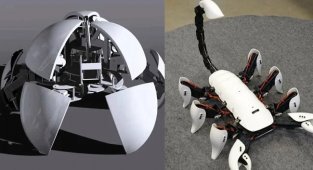Giant robots that actually exist (12 photos)
Today, robots surround us everywhere. They clean our houses and bring us food. And they can also be simply huge. From a huge ant to the largest hexapod robot, let's take a look at the top most unusual giant robots in the world. 
Giant mecha robot
In the Japanese city of Yokohama, a giant Gundam robot was tested - a life-size replica of the character from the anime of the same name.
The giant robot is set to be part of a museum/amusement park, Gundam Factory Yokohama, dedicated to giant robots. The opening was initially planned for July, but due to the pandemic it was postponed to October, and then indefinitely. The park's creators hope that the museum will now open within a year.
The giant is assembled from 200 parts, which are made of steel and carbon fiber reinforced plastic. Transforming a “set of parts” into a walking robot took 6 years. The robot's height is more than 18 m. It can turn its head, kneel, move its arms and fingers, and even walk. And this with a weight of 25 tons! The robot has a total of 24 moving elements.
Giant robot - ant 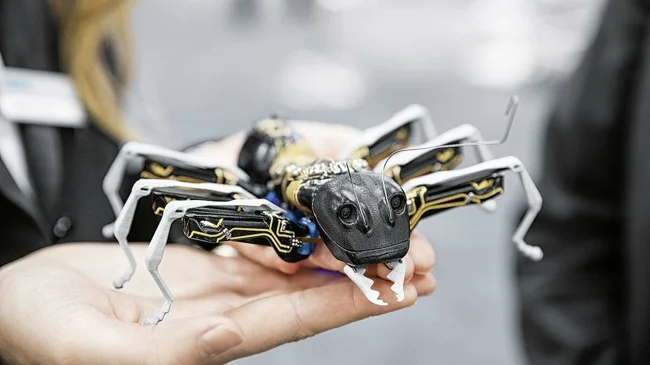
The family of robotic animals from German robotics developer Festo is expanding. As part of the Bionic Learning Network project, the company introduced a new type of robot: a swarm of ants that can interact with each other. The robotic ants are called BionicANTS. When creating them, Festo focused not only on their appearance and manner of movement, but also on their behavioral characteristics.
According to the developers, BionicANT operate according to clear rules distributed among themselves. Ants coordinate all their actions and movements with each other. 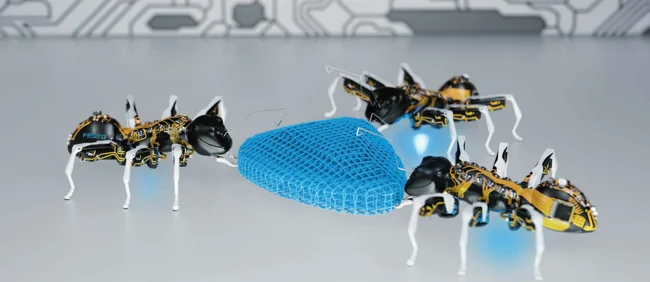
Each 13.5-centimeter ant has a radio module on its “belly”, with the help of which precise coordination is carried out. A 3D stereo camera in the ant's head allows it to see, and an infrared optical sensor installed below tracks the movement of the mini-robot. Meanwhile, two on-board batteries provide up to 40 minutes of wireless ant operation. They recharge in the dock using their antennae.
Kuratas 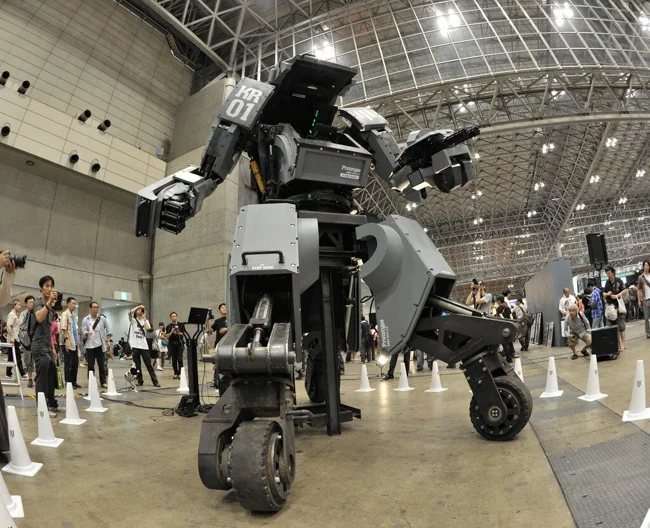
Kuratas is a robot created by Japanese developers. 4.4 tons of metal, four meters high, more than thirty hydraulic joints and, most importantly, an incredibly impressive appearance. The miracle of technology moves on wheels that end in four legs, and the beast-machine is “powered” by diesel. Inside, Kuratas has a driver’s seat, which controls the mechanism using a touchscreen and two joysticks responsible for the movements of the unit’s arms.
The robot is armed with two rocket launchers and two rotary machine guns. The rocket launchers are more or less real and can shoot fireworks or water bottles (but not full and not capable of causing injury). The machine guns are fake.
Of course, Kuratas will not enter service with the Japanese army anytime soon. This is largely a creative project, albeit executed with suspicious care.
Robot Method -2 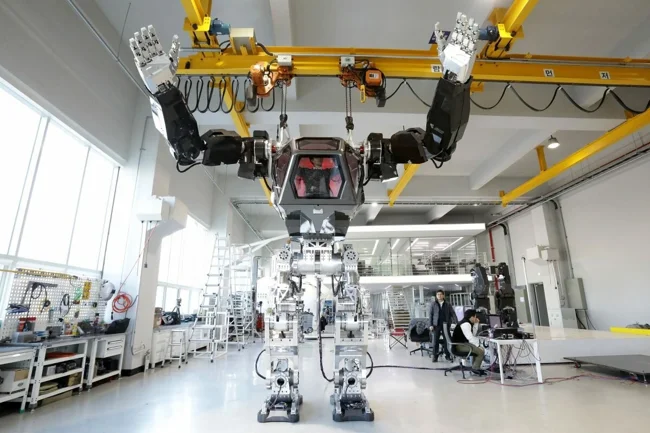
About $200 million has been spent since 2014 on the creation of the giant machine, which has the working title Method-2. The robot's arms alone weigh 130 kg each, the total weight is about 1.5 tons. And when Method-2 takes a step, the ground literally trembles beneath him.
However, walking and performing simple movements are practically the only actions that the giant robot can so far reproduce. He will learn to perform more complex actions in the next couple of years. In the meantime, it acts as an experimental – a working model, on which further technological solutions will be honed. The robot's developers promise to provide its first functional versions by the end of 2023. And they even announce the estimated price - about 10 billion won or 8.3 million dollars per copy.
Prosthesis 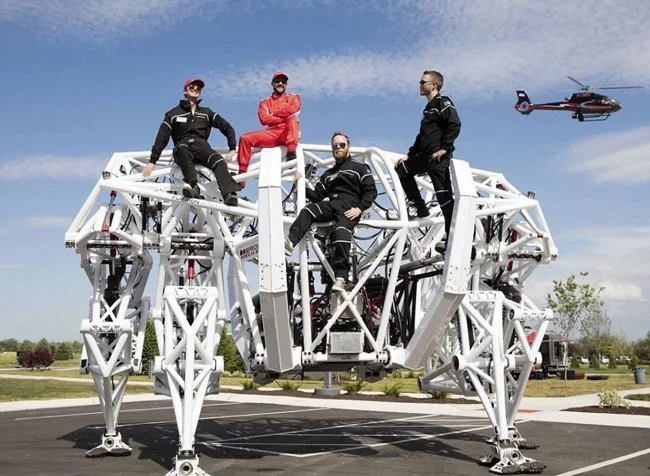
The Prosthesis exoskeleton is a five-meter robot for racing. Not only the futuristic design is striking, but also the very concept of the robot, in which the pilot “hangs”, freely moving the levers to control the movement of the robot.
The robot operates on the principle of an exoskeleton, i.e. To control the robot, it is necessary to make proportional movements of the controls. The appearance of the robot resembles a huge animal on four powerful legs with a pumped torso. The movement is carried out by alternately stepping over the paws. All mechanics operate on hydraulic traction; the power plant is an electric motor.
The car moves quite silently, despite its huge size:
Width - 5m.
Height - 4.2 m.
Length - 3m.
Weight - 3.5t.
The safety of the pilot is ensured by a powerful frame, a kind of monocoque around the cockpit. The “cabin” is mounted on 50 cm dampers, this is especially important during tests, because the car often turns over.
MK-3 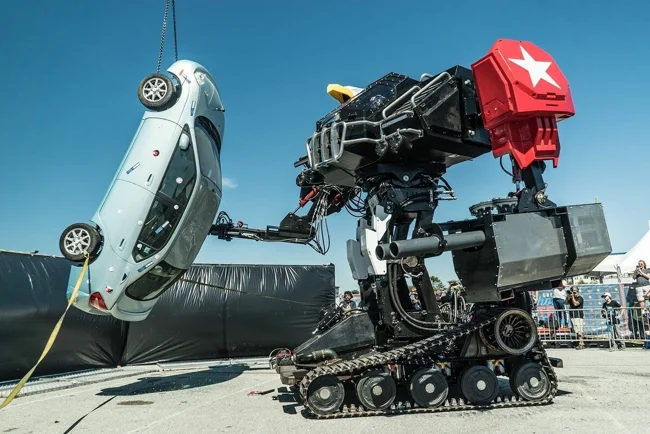
The Megabots company, quite well known in certain circles, presented to everyone its latest creation - a new robot called MK-3, which will have to compete in a duel with another heavy robot, the Japanese robot Kuratas. And as a demonstration of the capabilities of the new car, equipped with a new type of power manipulators, Megabots specialists forced the robot to grab a small car, lift it into the air to a height of 3.5 meters and throw it down.
To supply the MK-3 robot with the energy it needs, four 15-meter hoses are used, through which about half a cubic meter of hydraulic fluid is pumped per minute under a pressure of 280 atmospheres. Currently, only the upper part of the MK-3 robot, its torso and the Heavy Lift Arms power manipulators exist in the world, which allow the robot to lift a load weighing up to 1150 kilograms. The legs for this robot are still in the development and manufacturing stage, and in the meantime the robot for testing it is installed on a special mobile platform.
Monkey King 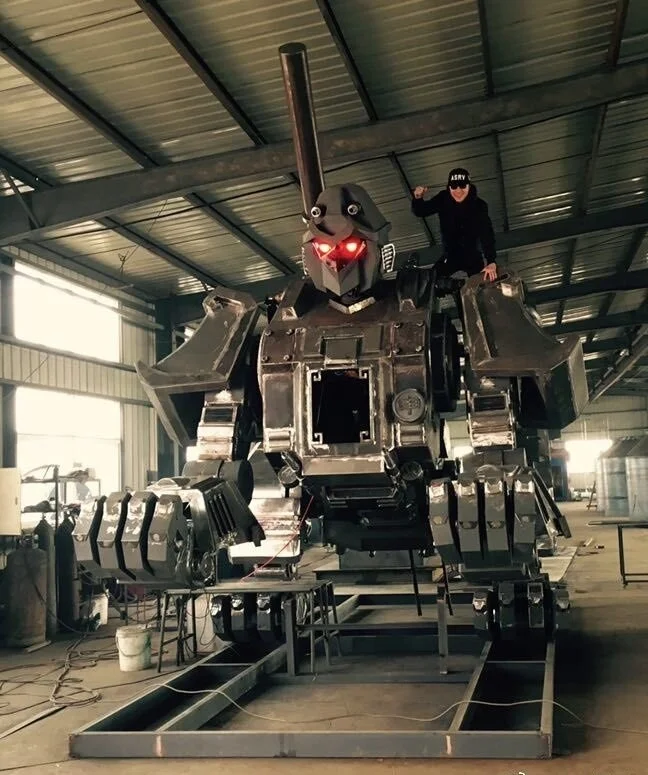
The Chinese company Greatmetal built a prototype of the manned combat robot Monkey King and presented it at the G-Festival in Beijing. The robot can walk on all fours for better stability, and can also stand upright on its feet. In a vertical stance, the robot can pick up a rod attached to its back and, apparently, use it as a weapon.
It is worth noting that the company published a video in which you can see the capabilities of the robot, but it is of low quality and part of the video was created using computer graphics, so it is difficult to assess the real capabilities of Monkey King. Apparently, he can actually move his limbs and head, and there is also a special mechanism for bringing the rod into the firing position. No other details about the robot have been revealed, and it is also not entirely clear whether Monkey King has its own power source or needs to be connected to external power. At the same time, in the description of the video, Greatmetal representatives stated that they consider Monkey King as a potential rival in the battles of combat humanoid robots.
Robot beetle Kabutom RX-03 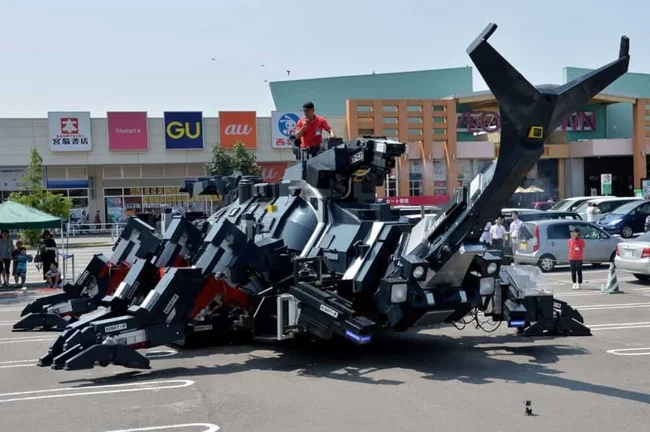
The robotic beetle Kabutom RX-03, designed by Japanese engineer Hitoshi Takahashi, appeared before the public at a festival held in the suburbs of Tokyo on August 26, 2012.
Kabutom is a robot in the shape of a large black beetle, 11 meters long and weighing 17 tons, with diesel engines, it can walk on six legs, blowing smoke from its nose. The car is capable of moving slowly, but not walking on its feet, as it might at first seem, but rolling on wheels. It was brought to the festival by two trucks and assembled using cranes for seven hours.
The robot can be controlled while inside the cabin (you can take a couple of passengers on board), as well as using a huge remote control.
When asked about the purpose of the “beetle,” its creator replies that, they say, let the car serve to lift the mood.
Mantis 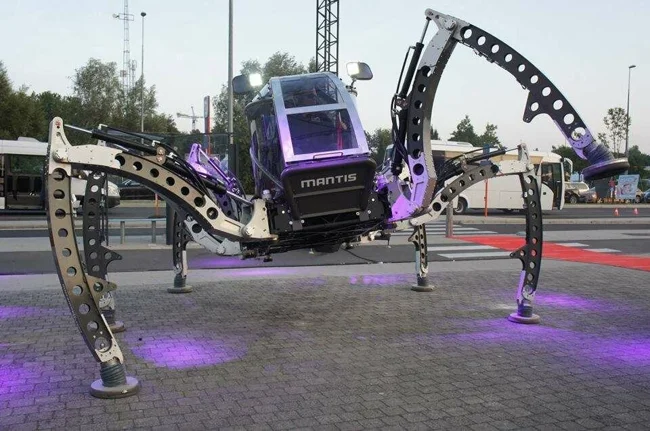
A group of crazy scientific minds at Micromagic Systems, led by Matt Denton, have been working for the past four years on a four-legged, spider-like robot designed to transport a person, Mantis. The resulting sample rightfully received the definition of “the largest all-terrain hexapod robot in the world.”
The robot weighs as much as 1,900 kg, is 2.8 meters tall, runs on a 2.2-liter Perkins turbodiesel engine and is stuffed with various sensors (including force sensors, rotation and tilt sensors, and an inclinometer) that help it walk. To coordinate movement, the robot uses HexEngine, based on a Linux PC, which monitors the movement of 18 hydraulic actuators installed in its legs. An additional computer panel located in the cockpit allows the robot to be controlled.
